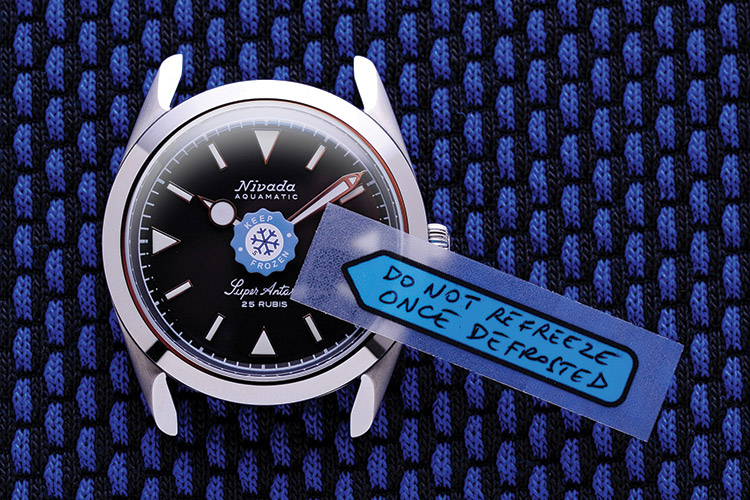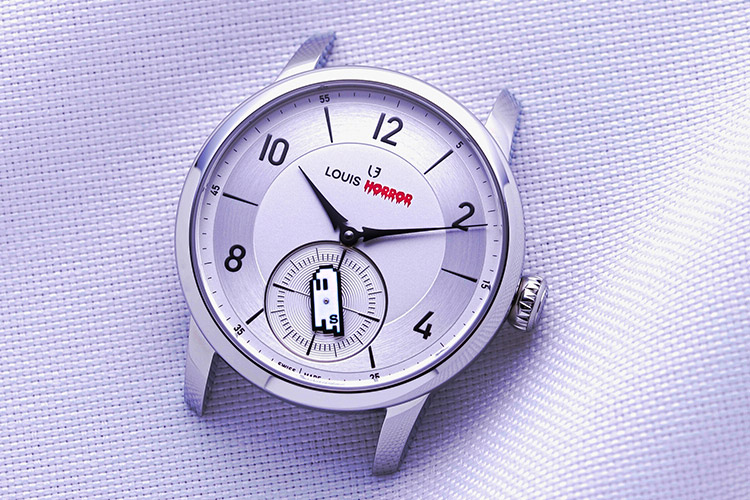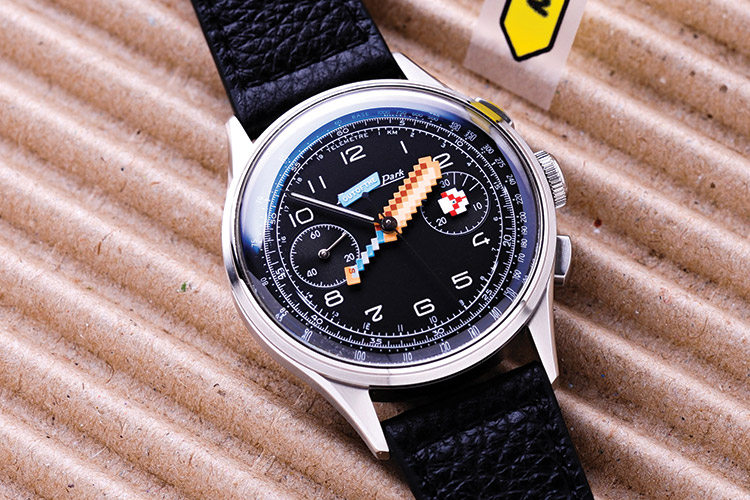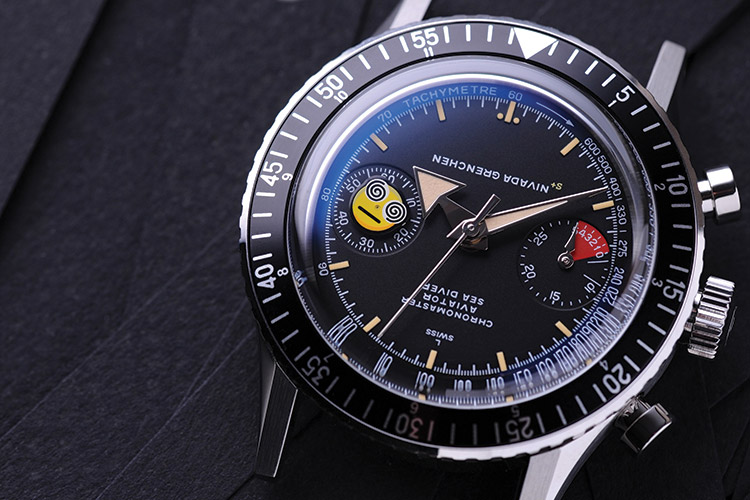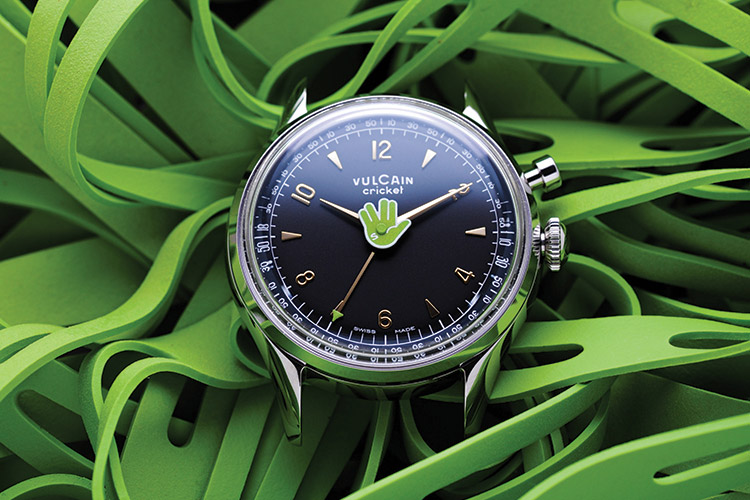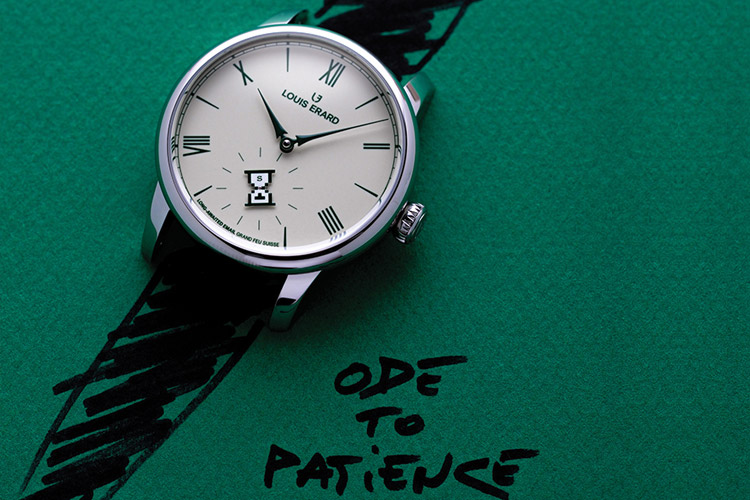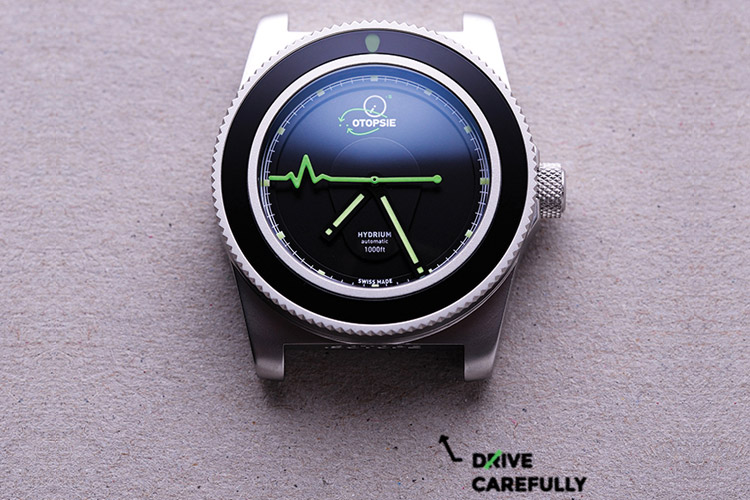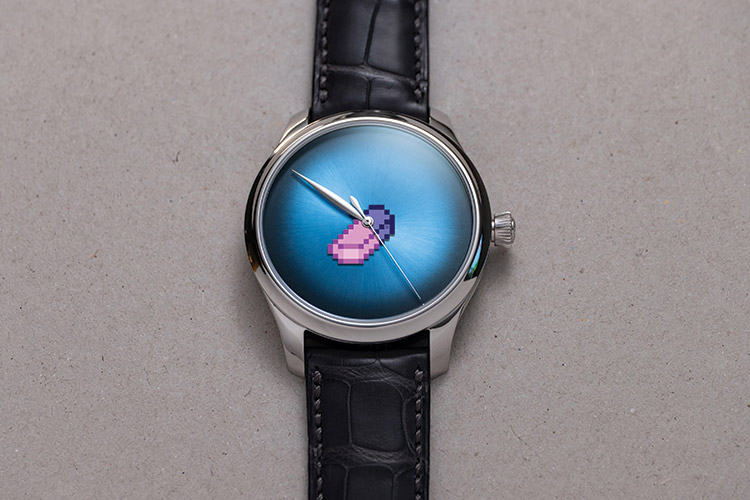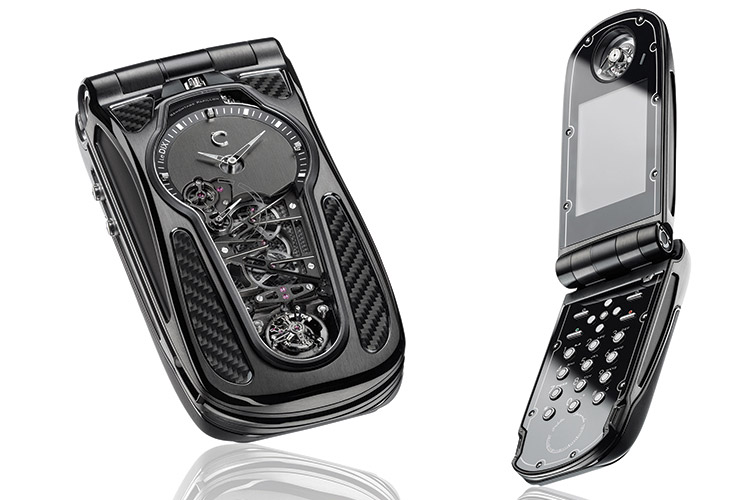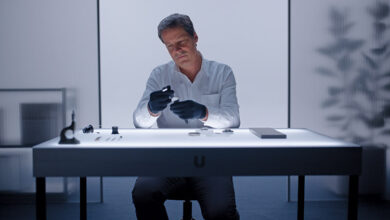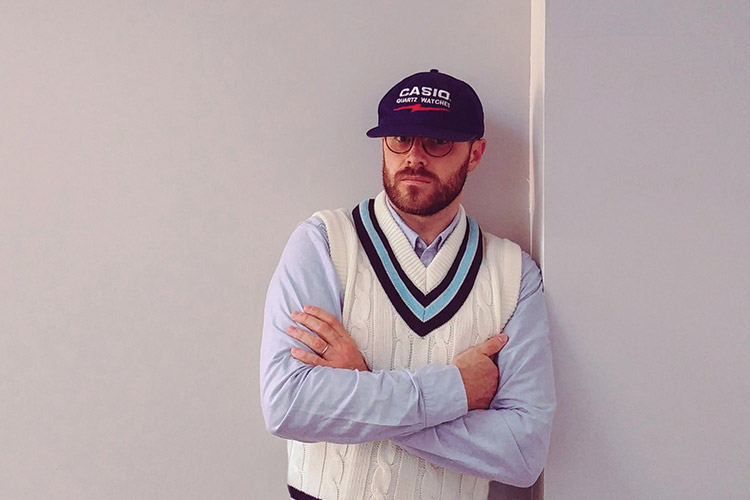
In this ongoing series featured every month, “Day & Night” focuses on individuals who have impacted the world of haute horlogerie positively… and in this issue, we focus on Romaric André who has added a quirky touch to the world of horology at both the entry level and haute horlogerie, with his brand Seconde Seconde
Romaric made his second (since it is Romaric we are talking about, be prepared for puns throughout!) entry into the world of horology in 2019. Adapting quickly to a changing dynamic, courtesy the pandemic, he soon found his way to collectors’ attention through his Instagram posts. Today, it is rare to find a horological aficionado who is not aware of his oeuvre.
Early years
Romaric was born in a small town in the east of France and spent a happy, unremarkable childhood there. On leaving school, he went to a business school in the south of France. “I became interested in watches through my brothers; we all had several Swatch watches, which are fun and cool watches, but I remember one of my brothers was always looking at the Breguet advertisements in magazines. He was the one who explained to me what Breguet does and what haute horlogerie means. He was the one who got me interested in watches and – I would not say ‘industry’ but – this hobby.”
First chance in horology
Immediately after Romaric graduated from business school, he started a company that tried to “mix high horology with mobile phones” – Celsius X VI II. It was in 2005 that Romaric started looking into the idea and Vertu’s success in the field, and he launched the company with a childhood friend in 2006. “We were inspired by the success of Vertu, a subsidiary of Nokia, at that time. At that time, everything at the high-end luxury level was selling well.”
They were able to raise funds by 2008. “We wanted to make it an ultra, high-end product, combining a tourbillon mechanism that was inserted into a clam shell phone. Each time you opened and closed the phone, you were also rewinding the mechanical watch inserted in it. Those were crazy years and we had big names as partners and stakeholders. Richard Mille was on our board of directors, but he was not an actual shareholder. Edouard Meylan – now CEO and Owner at H. Moser & Cie. – and I were co-CEOs; I founded the company with a childhood friend of mine, Alejandro Ricart, and Edouard joined us a little bit later and the three of us were the founders. Initially, the idea was that my friend and I would manage the company, but we lacked the financial means, the distribution network, and the industry knowledge that Edouard brought to us.”
Those were crazy years; he and his friends were raising funds and selling the product, but it was never enough, so they finally decided to give up the idea of being super high-end and make products a bit more affordable. “Our first product was priced at € 250,000 and in terms of today’s prices, considering inflation, it would have been around € 700,000. It was a lot of money and so we tried to launch a second product that was priced at € 80,000, but all of them were quite demanding in terms of R&D – both in terms of the horology and the mobile phones.”
It was not easy and at some point, in 2014-2015, they realised that their shareholders were done and that they could not run the company any longer. “The after-effects of the 2008 financial crisis lasted for quite some time and affected a lot of brands, but that is life, and you have to go through ups and downs, financially, and if your product and brand is consistent, you will be able to get through such times. I would not say that Celsius failed because of the financial crisis; it failed because inherently, it lacked a market.” It is easy to say that retrospectively, but at that time, not only Romaric but many other people thought that they could replicate the pyramidical structure of the watch industry – high-end, mid-range, and affordable – in the mobile industry also, but it didn’t work out. “At the end of the day, we understood that Nokia was putting in a lot of money to push the high-end mobile phone industry.”
Introspection and genesis
It was a tough time in his life as Romaric had put some many years in developing the company; he recalls, “The last few months were especially tough because I was dealing only with negative news every day. We had to go through the process of shutting down the company properly, which we did, but it takes time – and we were informing our employees, suppliers, etc. It was not the best moments of my life, but it was an important step towards the next path of my life.”
By 2016, Romaric was at a stage that he describes as “I was not depressed but was definitely a bit down at that point”. He did not want to leave the watch industry but “Wanted to do something without having to raise millions, without having to hire 20 people; to produce something that would be consistent, efficient, relevant but something that I could do almost by myself. Something that was low-risk, but big impact. Not something that was ‘change the world’ big but would get the attention of the watch community.”
When talking about this period, he remembers “Sitting in front of my computer with the photograph of a vintage Swiss chronograph watch on my screen. I remember that I changed the colour of one of the seconds chronograph hand with the software. These are the vintage watches that are patinated, with champagne dials; I just changed one of the hands to white. Because it was software, the white was extremely white on a vintage patinated dial, and I loved it.”
Romaric realised that he might have hit on something that would work – “To play with vintage watches and change just one hand with a really strong and flashy colour. I immediately realised that it could work because I could source vintage watches easily as they were not that expensive. At that time, I could find some small Rolex watches at around € 2,000 and Omegas for € 500 – all in very good condition. It is easy to take them to a watchmaker who could make them run perfectly, but the difficulty lay in the question of how I could paint those hands properly for full impact.”
If he repainted them, would he be killing the intrinsic value of the timepiece? “I then got the idea of manufacturing new hands and just swap the hands; this way, I was not destroying anything but just swapping one element. I could just keep the original hand and give it to the client when I sold the watch.” Romaric had his concept; it would be quite impactful visually because he could bring in colours and new hand designs on something that looked vintage and old. “The concept had a visual impact, and it was feasible too. It would surprise people, while some others would be upset because I would be touching a vintage piece. The next second I could tell them that I have destroyed nothing but have just swapped and they could just swap the hand back to get the original timepiece.”
He then started to hunt for manufacturers of watch hands in France. After that, he had to think about the kind of hands that he should make; “Something that was relevant because I did not want to just randomly place a colour or design on a hand. I wanted to create a link to the original timepiece every time I was designing a hand and it had to be meaningful to the watch itself. That was the beginning of the creative process.”
Seconde chance in horology
That was the genesis of the brand Seconde Seconde. Romaric confesses that he loves the “redundancy of the second Seconde. It sticks in your head, makes for easy recall and is very powerful; since I wanted to change the seconds hand on second-hand watches, it was going to be a second second hand. Seconde Seconde sounded cool; another reasoning was that this was not my first idea; I had just failed and closed my company; I was not a leader, not a successful businessman. Maybe I was not meant to be numero uno but a number two and this was my second project in life. This idea of being number two was quite prominent in my thinking at that point.”
Thanks to the contacts that he had already established in the watch industry, Romaric was able to meet collectors even before he actually launched the company. “After I had this idea, I went to meet 3-5 influential collectors and pitched my concept to them, requesting their feedback. Each time, the reaction was the same; initially, they would be like, ‘You are killing the value of those pieces!’ Once they understood that I was only switching and not destroying but actually adding a layer to those watches, they were convinced. All the collectors I went to see for their feedback turned into a customer. This gave me a lot of confidence as these people were not easily influenced but I could convince them.” Not only could Romaric convince them, but they would go on to be his ambassadors in a way. “They were going to tell the world that what I am doing is right. It may be surprising and unexpected, but I was allowed to go ahead with my idea.”
It was in 2018 that Romaric was able to set up his initial plans and production in place; in 2019, he went to Baselworld. “I had already been in touch with William Massena by email in 2018 and I had the opportunity of meeting him at Basel in 2019. He became a customer of mine for vintage pieces and later because he saw that my pieces were popular and that I was coming up with new ideas, he contacted me in 2020 for a collaboration with his Massena LAB timepiece.” That was the “Hmm…Looks Familiar” seconde/seconde x Massena LAB Uni-Racer “Big Eye” Special Edition. “At that time, I did not even realise how important the collaboration would be for me. It was a great opportunity for me, and it opened my mindset. It showed me that perhaps many brands might be interested in having me work on their catalogue products and to play with those timepieces.”
Romaric considers his collaboration with H. Moser & Cie. as perhaps his most important one. “They are highly positioned and respected, and this collaboration made a real difference to my game plan. It paved the way for me to show that not only could I add value to entry-level pieces and brands but that I could be relevant to high-end pieces as well. Of course, my personal connection with the Meylan brothers made it even more special for me.”
When asked on how the initial idea of a collaboration is approached, Romaric says that there is no set plan or beginning. “Sometimes, brands come to me saying, ‘We like what you do; we like the universe you are picturing on Instagram, and we would be interested in doing something together’. Other times, it is me having an idea about a specific watch or brand and I try to push my idea. It has been very different each time. Sometimes, I may have had a direct connection with the brand, and I am pushing it. Other times, to take my concept to the ears of the brand I have had to use my network.” Romaric prizes his personal network – a result of his past experience in the industry. “My personal network is highly important because I need to bring my idea to the attention of the top management. Because my ideas are disruptive, I have to go to the top to see how the top management is reacting to this idea – whether it makes sense to them or not.”
One of his easiest collaborations has been with Louis Erard and perhaps the fastest, too; Romaric has worked on three collaborations with Louis Erard. The first was Le Régulateur Louis Erard x seconde/seconde/. It took a little bit of time in terms of actual production etc., but it did not take that much of thinking or convincing on the part of Romaric because the concept immediately caught the attention of the top management at Louis Erard. “Manuel Emch was not really a friend, but I had his number as I had met him a few years ago. One day, I suddenly had this idea of playing on the brand name – changing it from ‘Louis Erard’ to ‘Louis Error’, with a minute hand that would swap the word ‘Louis’ to ‘404’, playing on the ‘404 error’ used in software. It was a bit disruptive and a bit difficult because I was actually changing their logo and brand name.” Brands usually are not receptive to the idea of hiding their logo, but Romaric decided to build on the idea. “I quickly designed it and sent it to Manuel with almost no context. It was a basic message that went something like, “Hello Manuel, we met a few years ago and I have this idea…”. Boom! His reply came within 10 minutes or so on WhatsApp, ‘Let’s get on a call.’” Emch of course waited to confirm that nobody on the board of Louis Erard would be upset by the concept but that was it. “It took a few months to set up the manufacturing aspect, but the actual design and approval of the concept took less than 20 minutes.”
Romaric’s first collaboration with Louis Erard was soon followed by another one for Halloween – La Petite Seconde Louis Horror x seconde/seconde/. This was followed by a third collaboration with Louis Erard and the Asian team of Watches of Switzerland – the Louis Erard x Watches of Switzerland x seconde/seconde/ Excellence Long-Awaited Email Grand Feu, with the hourglass. “We were playing on the way ‘enamel’ translates as ‘émail’ in French and the fact that the process to create an enamel dial takes a lot of time. We changed the seconds subdial to a pixellated hourglass, which indicated the time and passion needed to create an enamel dial and also referenced The Hour Glass, the parent company of Watches of Switzerland, thus providing multiple layers of meaning to the design.
